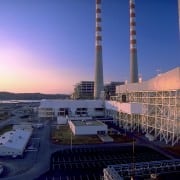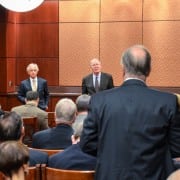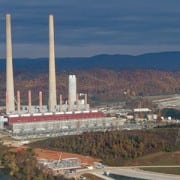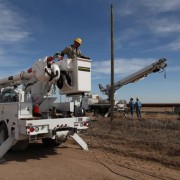Impacts
By David Callis, executive vice president and general manager
While there are usually two sides to every story, quite often there are even more. That makes decision-making difficult, whether it’s parenting, voting or solving complex business decisions. If you’ve ever separated quarreling siblings, you know it’s no simple task discovering who instigated the fight. You listen to both parties, check the facts and dispense justice — or something close to it.
The Environmental Protection Agency (EPA) recently introduced its Clean Power Plan, which would essentially restructure the way electricity is generated — local decisions would be made in Washington, D.C. As the EPA unveiled the proposed rule, it also quoted statistics stating that the cost of electricity would be lower in 2030 if the rule were adopted.
If you only consider the information the EPA provided, you wouldn’t really understand why anyone would oppose a plan that purports to lower your electric bill and fight climate change.
That is unless, of course, you looked at another side of the issue.
Everyone wants clean air; that should go without saying. Over the past decades, electric cooperatives across the nation have invested billions of dollars in emissions technologies and renewable energy sources. We’ve also led the way in energy-efficiency efforts; what other industry pays you to use less of its product?
Closer to home, the Tennessee Valley Authority closed several aging coal plants, switched fuels to natural gas whenever possible and continued to build carbon-emission-free nuclear generation. All of these measures have been cost-effective, systematic and done without federal mandates. (TVA is a federal agency, but operating decisions are made locally.)
The EPA’s rule essentially eliminates coal as a generation source. To the EPA and proponents of the rule, that’s great. Yet, there is another side to the “war on coal.”
At a recent EPA hearing in Denver, Moffat County (Colorado) Commissioner John Kinkaid shared the impact coal has on his county. He began by discussing the natural beauty of his county and the tourism and recreational options available.
And then he discussed the financial impact of the EPA rule. The coal mines and power plants are the largest taxpayers in the county, providing an annual financial impact of more than $428 million to the local economy. This comes from the very same coal-fired plant that co-exists with the residents and the mountains.
Residents of the county don’t want it closed. They don’t want local residents to lose good jobs. They don’t want their school systems to struggle for funding. They want to control their destiny, making the decisions that impact their future.
Opposition to EPA’s Clean Power Plan doesn’t mean that we only support coal, and it certainly doesn’t mean that we oppose clean air. However, the plan’s impact on the U.S. economy is far too great without making any significant impact on reducing global carbon emissions.
Moffat County is only one of many areas impacted by the plan. Tens of thousands of families could see their lives upended for a rule that, on its face, looks like a good idea.
As we’ve mentioned, the EPA is taking comments on the Clean Power Plan proposed rule until Thursday, Oct. 16. EPA officials asked for comments, so let’s give them comments. Go to takeactionTN.com and let your voice be heard.



![87PW2558[1]](https://www.tnelectric.org/wp-content/uploads/2016/02/87PW25581-180x180.jpg)





